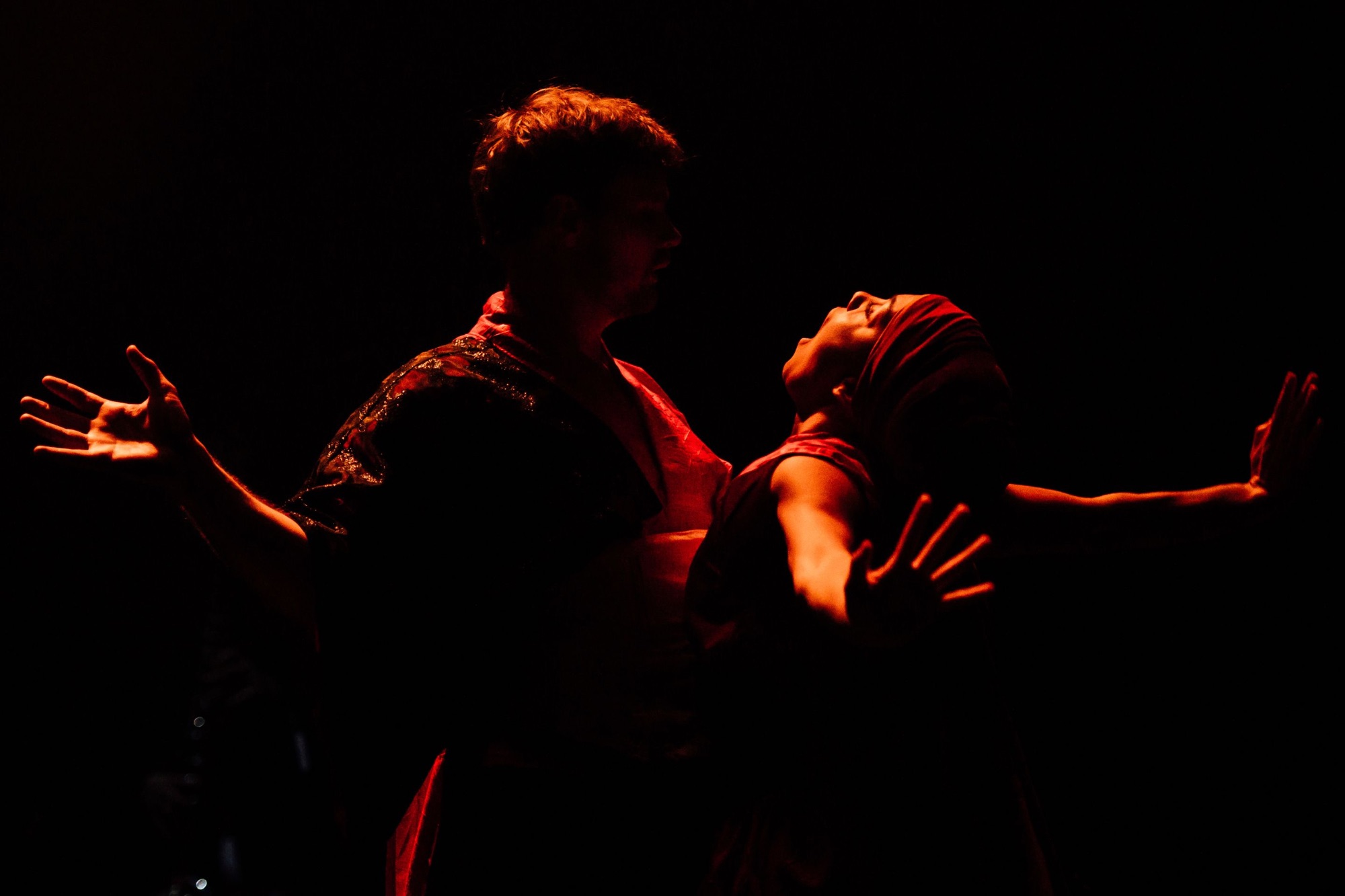Words by Francesca Matthys.
Walking into a performance space where the artists have intentionally set the atmosphere, allowing for a soft landing into the world, is always a delight. The Place’s stage was carefully curated by the choreographers; Maya Toussaint, aka Ella Mesma and Akeim Toussaint Buck. With the musicians set up upstage, sonically and very gently laying the foundation for what we were to experience.
Okan, that is meditation on ‘Oneness’ ‘Conscience’ & ‘Heart’ drawing from its Yoruba meaning and a limitless approach to the experience of life, invites us in through elements of earth and wind as performer Ofelia Balogun conjures in the energy and spirits needed to enact the ritual to come. The ritual of life perhaps. Of being present to all of it. The spirals in her movement are intricate and embody actions of gathering, mixing, consolidating a type of spiritual work to be done.
This world is inherently spiritual as the choreographers both regularly bring these embodiments to their work.
As an artist myself who makes work through a spiritual lens, I wonder why other artists choose to make work that sits within this plane. For me it is often because the materiality of the world limits our expansive selves to find a deeper wisdom or meaning. Perhaps in Okan it is this too and to access our divine selves to support how we navigate the world.
If we were all deities, what qualities would that offer us in our worldly realities?
Ofelia Balogun and David Evans clad in layered costumes of red, black and white, an illustration of the hybrid world created from incorporating traditions of Salsa, Wing Chun amongst other styles such as Breaking and Capoiera, access their divine selves as deities as they traverse this transient space of then and now. A meeting point for cultures, disciplines and spiritual ground.
This dynamic yet tender duet explores relationships between beings on a physical and spiritual level. As the divine masculine feminine is explored, we are reminded that we all possess these qualities of masculine and feminine, that we are all the sum of one another. But not without occasional frictions. These personas or expressions are supported by the concept and presence of Orixas. In Afro-Brazilian religions such as Candomblé, with strong ties to modern day Benin & Nigeria, the orixas are deities that serve as connections between the spiritual and human world. This subject is vast with multiple intricacies that can never be encapsulated in one show alone. However, Okan offers some striking references that are recognisable of these traditions.
Red and white, present in the work are synonymous with the orixa Xangô, of fire, thunder and lightning. This strength can be clearly felt and seen in the movement vocabulary of the work and co-choreographer Mesma’s comment of fighting fire with fire in combining these various martial dances. I believe it is a very intentional and strong choice by the choreographer to use martial dances that have connotations and history of combat to explore such delicate experiences of inner selves.
Throughout the work, both performers show references to Candonblé practitioners being mounted by the spirit of the orixas, through their vibrating chests and movement vocabulary connected to these specific deities within Afro-Brazilian culture. This movement vocabulary often focuses on the upper body and arms as they become symbolic objects that these deities carry such as the axe of Xangô and machete of Iansã. This focus on the hands extends into the work, allowing every moment of contact with the hands to be a soft touch, a gentle encouragement. Never an imposition. A reflection perhaps on the nature of the relationships the work wishes to show or cultivate.
In the post-performance discussion, one of the choreographers mentioned that the orixia Oba’s energy is present in the work. Oba, who is one of Xangô’s wives, and the orixia of the rivers, known for her ability to enchant, can be seen in the role that performer Ofelia plays in the work. We witness intriguing incantations as she performs actions of pulling something invisible out from her mouth numerous times. The embodied support from Evans during these moments can be reflected as the holding of space that we offer for ourselves or our divine counterparts.
Okan is truly an intimate and spiritual dance, supported by a live sonic landscape that is seamlessly threaded into the overall offering. Through the post-performance discussion, it was evident that all collaborators, including musicians felt that they were offered space for their creativity to flourish. Space for diverse musical backgrounds and lineages to be integrated into the work.
Overall, I am left with the sensuality of the work, through its content and aesthetics. The stage crafted, with dim, romantic and dreamlike lighting and sheer panels, framing the stage and windows into spirit worlds. Spirit worlds that in our current reality is maybe where we might find our strength from.
